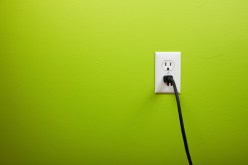How to Diagnose and Fix Issues with Your Samsung Washer: A Step-by-Step Guide
Samsung washers are renowned for their advanced technology and efficiency, making laundry days simpler and more convenient. However, like any appliance, they can occasionally encounter issues. Understanding how to troubleshoot your Samsung washer can save you time, money, and unnecessary stress. In this guide, we will walk you through the most common problems faced by Samsung washer owners and provide step-by-step solutions to help you get your appliance back in working order.
Common Problems with Samsung Washers
When using a Samsung washer, users may face several common issues that can disrupt the washing process. Some of the most frequently reported problems include water not filling in the drum, excessive noise during operation, doors not locking properly, or a failure to spin or drain. Identifying these issues early on is crucial for effective troubleshooting. If your washer exhibits any of these symptoms, it’s important not to panic; many of these problems have straightforward solutions that can be resolved at home.
Basic Troubleshooting Steps
Before diving into specific repairs or calling a technician, there are some basic troubleshooting steps every owner should take. Start by checking the power supply; make sure the washer is plugged in securely and that there’s no tripped breaker. Next, inspect your water supply hoses for kinks or blockages that could prevent proper filling. For machines that won’t start or respond, ensure that the door is closed completely as many models have safety interlocks preventing operation when doors aren’t secured.
Addressing Specific Issues
Once basic checks are complete without resolving the issue at hand, it’s time to address specific problems with targeted actions. If your machine isn’t draining properly after a wash cycle completes—often indicated by water remaining in the tub—you might need to clean out the filter located at the bottom front of most models. Similarly, if you’re experiencing loud noises during washing cycles which could indicate something lodged inside (like coins) or an imbalance due to unbalanced loads—redistributing clothes evenly can often solve this problem without needing professional help.
When to Seek Professional Help
While many issues with Samsung washers can be DIY-ed successfully using troubleshooting techniques outlined above, there are situations where professional repair services may be necessary. If you’ve reset your machine multiple times without success or if error codes persist despite following manufacturer recommendations found in user manuals or online resources—it’s advisable to consult a certified technician who specializes in appliance repair for further assistance.
In conclusion, diagnosing and fixing issues with your Samsung washer doesn’t have to be overwhelming if you follow systematic troubleshooting steps. By being proactive about maintenance and familiarizing yourself with common problems as well as their solutions you’re likely able keep your laundry routine running smoothly for years ahead.
This text was generated using a large language model, and select text has been reviewed and moderated for purposes such as readability.





